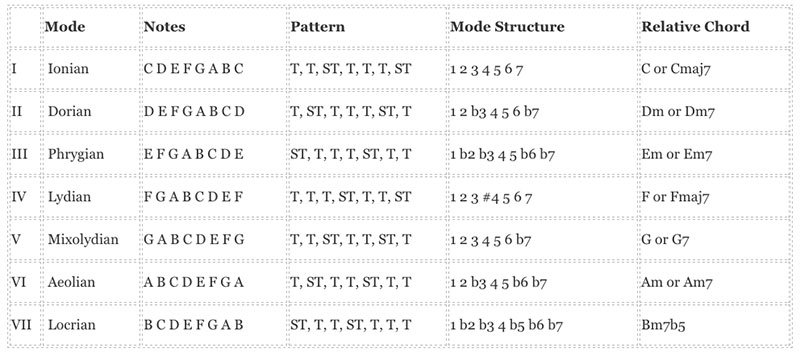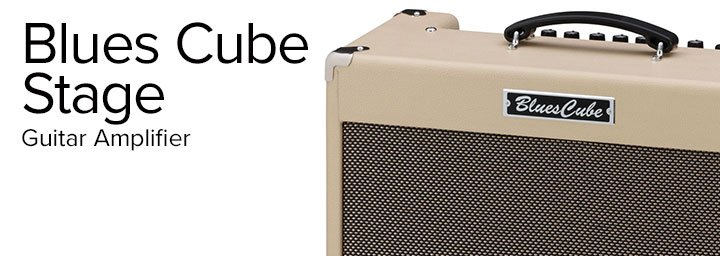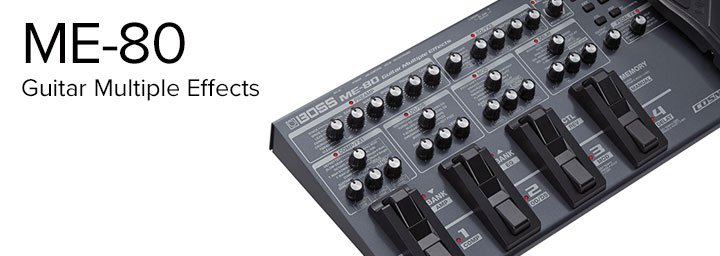To state the obvious, all of the modes have weird names. Get over it. To make it worse, if you think that you are going to impress people with your newfound big words – think again. Even accomplished musicians start glazing over when you whip out names like ‘Phrygian’ and ‘Ionian’ in conversation.
Will learning the modes bring you enlightenment? Possibly not. But they will make you think twice about defaulting to the pentatonic shapes when it’s your turn to solo.
This series of articles is designed to take the mystery out the modes and give you knowledge of the ‘whys’, not just the ‘hows’. There are loads of websites out there that list some generic rules; use Ionian mode over Major 11th chords, use Mixolydian over dominant or dominant 7th chords, Phrygian over minor 9th chords and choose between Aeolian or Phrygian for minor chords with a b13.
However, the purpose of these articles is for you to understand the modes and their application. Go through them at your own pace and over time you should be able to identify all the modes and understand their distinctive sound and ‘feel’. Then you can start incorporating them into your playing. With a little knowledge and practice, you’ll find your solos can instantly create feelings of happiness, sadness, tension or resolution.
So, what exactly are modes? Why are they shrouded in mystery and when should you use them? Well, let’s go back a few hundred years, since the early 1600’s, music has essentially been based on two types of scales – major and minor.
Contributed by Mark Smith for the Roland Australia Blog
The major scale we use today has the following pattern:

The minor scale we use today has the following pattern:

As you can see, this is exactly the same pattern, but the two scales start and end at a different point. For example, in the key of C, the major scale is C D E F G A B C and the natural minor scale is A B C D E F G A. Over the next few weeks, we are going to go through each of the modes in more detail and explain how, why and when to use them. To get the most out of these articles, you might need to brush up on some basic chord theory, and there are tons of YouTube videos on this very topic.
For now, to get an overview, let’s look at all the modes in the key of C (because it has no sharp or flat notes).
MODES IN KEY OF C

The table above shows all of the modes in the key of C. You may have noticed that the first mode (Ionian) is exactly the same as our modern day major scale, and the sixth mode (Aeolian) corresponds to our (natural) minor scale.
All the modes contain exactly the same notes, they just start and end at different points. So why bother with a fancy name? Good question! Because the sound of the mode depends on the underlying chords.
By way of example, the table above shows that if we are in the key of C, the second mode is called Dorian and contains the notes D E F G A B C D. If we take the 1st, 3rd, 5th and 7th notes of the Dorian mode (D F A C), we have a Dm7 chord. So, the magic of the Dorian mode happens when you are playing in the key of C, but the D minor chord (or Dm7) is at the heart of the progression.
This will be covered in more depth in later articles. Accompanying each article will include a video example where guitarist Roberto Restuccia will play along to a backing track that contains the appropriate chord progression. You will be able to download the same backing track (thanks to our friends at Coffee Break Grooves) and try them out for yourself.
Oh yeah, back to the names. Most people believe they can be traced back to different tribes in ancient Greek society (The Ionians, The Dorians, The Phrygians, etc). Each of these communities had their own distinctive musical ‘feel’ and as you’ll hear, some of them were happy (Ionians), some of them were sad (Aeolians) and some of them were a bit “out there” (Locrians).
VIDEO – All Modes
Others in the series:
Ionian Mode
Dorian Mode
Lydian Mode
Aeolian Mode
Locrian Mode
Mixolydian Mode
Phrygian Mode










